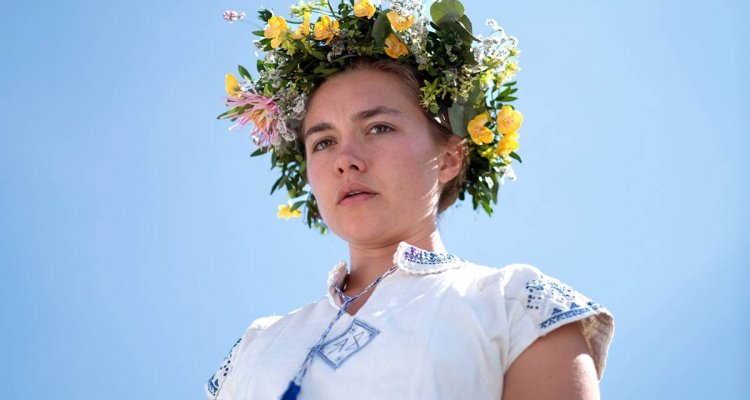It’s not usually a good sign when people begin whispering about a director’s cut of a film while the original is still in theaters, but luckily, when Ari Aster took the stage at Lincoln Center’s Scary Movies XII to introduce his director’s cut of “Midsommar,” he explained that the extended running time is what prevented him and A24 from releasing this version in theaters. Aster’s director’s cut, coming in at 171 minutes, as opposed to the theatrical version’s 147 (he teased/threatened the audience by mentioned a four hour work cut), does not reorient the story or provide more outrageous violence or scares, but rather, it provides a more complete picture of the twisted fairy tale. Accordingly, this version is unlikely to convert viewers who disliked the film in theaters, but fans will delight in the added detail and immersion in the sun-drenched yet sinister commune of Hårga.
“Midsommar” centers on Dani (Florence Pugh), a young woman who loses her family in one tragic stroke and only has her hapless grad student boyfriend Christian (Jack Reynor) for support. Christian had been planning to dump Dani but is unable to after the tragedy and instead invites her on a trip to Sweden he had been hiding from her. As the couple travels with fellow grad students Josh (William Jackson Harper) and Mark (Will Poulter) to their friend Pelle’s (Vilhelm Blomgren) rural Swedish hometown, Dani’s complete alienation from her home and Christian becomes painfully obvious, just as the native Hårgans welcome her into a much more intimate and purposeful family, albeit one with slightly different values and slightly darker rituals.
It’s difficult to talk about the new cut of the film without mentioning spoilers, so consider this your warning.
Aster’s director’s cut makes it more apparent that “Midsommar” is far more a fairy tale than a traditional horror film. Instead of obsessing over tactics, or different choices characters could have made for different fates, the purpose of “Midsommar” is to transform Dani into a Hårgan with a sense of inevitability. Her male companions each make one particularly bad choice that seals their fates, but they were essentially doomed from the start by character or lack thereof. Watching the film again with more detail, it’s both obvious and hilarious just how little Aster is trying to fool the audience, from Pelle’s ominous comments to the fact that the Hårgan’s most shocking violence of the festival comes on day one. The director’s cut is also funnier, putting more crass jokes in the mouths of the Americans to show just how out of place they are amongst this supposed idyllic community.
While “Midsommar” is filled with wonderful visual subtleties, like the illuminated walls or symbology of Hårga, story-wise it is deliciously unsubtle (just ask those hammer wielders). Aster’s goal is to use his directorial tools to normalize the Hårgan view of family/community relative to the modern Western idea. The visual contrast couldn’t be more blunt. The prologue is snow-filled and claustrophobic, using cool color temperatures and chilly tracking shots to show just how alone Dani is and how insufficient digital communication is to actually maintain close connections. When she arrives in Hårga, the visual tone is turned upside down – sun, nature, and good cheer fill the screen to an absurd degree.
The longer cut’s biggest difference is the added depth it gives to Dani and Christian’s failing relationship. While Christian was a purposeless putz in the theatrical version, leading to him being labeled as a garden-variety bad boyfriend (and is he really supposed to dump Dani right after her family dies?), but in the added scenes his toxicity reaches full flower. Thwarted in his goal of an easy exit from Dani, instead, he ham-handedly tries to push her away from him, picking fights by twisting innocent gestures like a gift of flowers into insidious attacks on his ego. In this version, he is not just failing to adequately support Dani, but he is gaslighting her and undermining her sense of sanity and self-worth, making the ending all the more earned and satisfying.
Beyond that relationship, the director’s cut doesn’t add much psychological depth to the characters, but that was never what “Midsommar” was really about. Aster’s achievement is creating an alternate culture, filling it with life and history, and allowing Dani and the audience to compare and contrast it with our own. Hopefully, most audiences won’t want to move to Hårga after seeing the film, but it’s hard to deny that the Hårgans live with a sense of connection and purpose that modern life leaves many craving. [B+]

